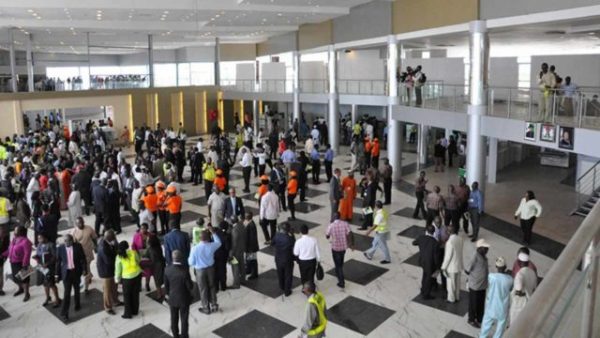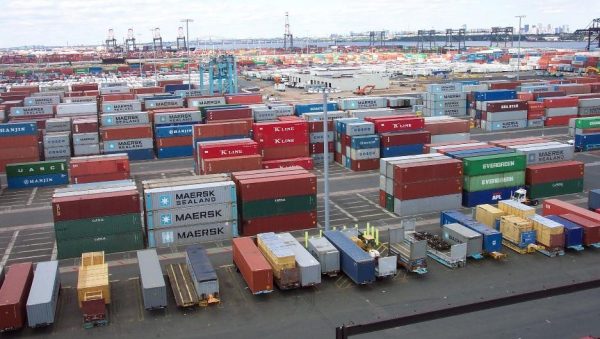Managing Illegal Mining Activities For Common Good

By Oyeniyi Iwakun
“You never change things by fighting the existing reality. To change something, build a new model that makes the existing model obsolete.”― R. Buckminster Fuller
Buckminster Fuller and Janet Adeyemi are of compatible ideology when it comes to solving civil issues, especially as it borders on the welfare of citizens where violence is never seen as the best option and such approach is germane in curbing the cases of illegal mining activities in Nigeria.
Illegal mining became more rampant in Nigeria than ever before as a result of government’s negligence of the sector and over dependence on oil thereby resulting to its domination by unskilled miners whose activities are inimical to the progress, development and the health of the host communities and the country at large.
Illegal mining refers to mining activities carried out devoid of legitimate procedures or without the permission of the government. It also refers to the exploration or extraction of mineral resources without land rights, mining license or mineral transportation permit.Simply put; unauthorised activity since the law and constitution clearly stated the guidelines for exploitation and sale of mineral resources.
The President of Women in Mining, Nigeria, Engr. Janet Adeyemi, a former member of Federal House of representatives and Presidential aide while speaking with MMS Plus recently said all over the world, the word “illegal mining” has been modified to “Artisanal Mining” (ASM) to encourage the reform and formalisation especially when this mining is done at the subsistence level, it may also be referred to as informal mining and they are categorized. However some ASM have since grown into small scale operators and some collaborate with title holder or formalised into cooperatives. For the purpose of this article, l will focus on the lowest level of ASM operators who are driven into mining by “Pull or Push” reasons.
According to her, the ASM generally do not have access to modern equipment and they are usually forced into this occupation by crushing hunger or poverty. In some cases, it is the promise of deep pocket bosses who are able to inspire them to mine for export purposes.
“It is the Pull and Push factors that drive them into artisanal mining ranging from hunger, instinct to survive hunger due to abject poverty and the lure from men of means who engage them to work for them. The Pull, which emanates from the orientation that I was born in the area, my parents had been doing it before and so I have the right to continue, make people go into artisanal mining.” She said
Engr. Janet observed that the equipments used by these local miners are usually crude and simple and in a lot of cases include shovels, head pans, hammers, pickaxes, simple crushers, sluice boxes, rolling mills and sieves and so on.
In Nigeria, artisanal miners are usually from rural communities who are without legal mineral title. As a result of the absence of major legal mining companies, these rural miners hold sway in many of Nigeria’s mines.
It is incontrovertible that Nigeria is greatly blessed with so many solid minerals that should be a major attraction for established and legal miners. Yet, this lucrative industry is left for artisanal miners, who largely operate illegally and have become dominant in Nigeria’s mining industry. Aside the risks it portends to the miners and the communities around it, it becomes difficult for Nigeria to keep a proper record of its production levels in terms of solid mineral extraction and sales.
Illegal miners are present in several communities in Nigeria and are believed to be in their hundreds of thousands. One can imagine its deadly effects and the dangers it poses to the survival of the nation. Not long ago, eight (8) Chinese citizens, twelve (12) Nigerian were arrested for illegal mining in Plateau State. The unwarranted deaths from mining illegally are many, bearing in mind the Zamfara lead poisoning where over 200 lives were lost and Bagega in Niger state which suffered the safe fate from lead poisoning.
The damages of this act range from economic, environmental and health where right taxes and royalties are not paid to the host community or government. They have no social security and usually have little or no investment capital, thus putting both their financial and health status in line to scrap out the minerals. Owing to the poor enforcement of regulation of this sector in the past due to paucity of funds allocated to the sector. Mining activities contribute little or nothing to the government revenue. Community rights are not adhered to by the miners and they are done at the detriment of the environment. They often carry out their activities without technical expertise and plunder away a lot on their journeys to finding the much-coveted minerals. Most of these activities contaminate water sources of surrounding communities and thus gradually poisoning an entire village.
Adequate measures are not taken as there are no standards to live up to. There is also an absence of accountability of mining activities carried out, thus ensuring miners act with reckless abandon. These miners lack right equipments to protect themselves from the poisonous substances they are exposed to during their mining activities. One may imagine the long-term health implications it would have on them.
The mining areas are usually left unremediated and reclaimed thereby becoming death traps for humans and animals as well. These activities sometimes may lead to the degradation of farmlands, problem of pollution and can be dangerous to human and plant life.
The federal and states governments have made several moves in the past to address this issues but their approaches seem to be weak as illegal mining activities still persist.
However the present administration is determined to tackle all the menaces in the sector through the creation of a road map to drive the sector.The road map has six core objectives and the policies around them are gradually been implemented. Surely, it will take a while but there is light at the end of the tunnel.
The illegal miners have been successful in the past because the states were looking elsewhere since they believed that mining been on the exclusive list in the constitution denied them of accrued benefits from mining. However with the Mineral council inaugurated this year (2017) September 16th where all stakeholders can interact, all previous areas of friction will surely ease out. It is also noteworthy to mention that state governments can partner investors to engage in mining.
This inclusive cooperation and the activation of MIREMCO will transform mining operations and monitoring for good in Nigeria. The illegal operations am not saying is curbed completely as evidenced by the most recent atrocities in Osun state where last week the government worried by the spate of activities of illegal miners in the state, quickly inaugurated the committee on mineral resources and environment management (MIREMCO) to curb illegal mining activities in the State. The digitalisation of the process of transaction is from application, license Permits, royalties etc will make the process open and transparent, all these will reduce illegality in the sector
However, rather than chase the artisanal miners off, they should be formalized into cooperative groups for proper training, monitoring and development of the sector because in the real sense they brought attraction to the industry and had been sustaining it even when government and others are lost in the quest for low hanging fruits or quick wins as a result of oil boom. Managing Illegal Mining Activities For Common Good. The thinking behind the Minerals and Mining Act 2007, section 34 and 91 recognised the need to formalise them into cooperatives, build their capacities, provide training and extension services to enable them grow in the sector.
Currently as we speak ,the world mining journal derisk Nigeria as a mining destination and our perception index has improved tremendously, l am more than convinced that as we adhere to the Roadmap of the sector for consistency and stability our current contribution of 0.03% to GDP will increase to 7% which is the target of the sector and no where was it recommended that ASMs be chased away.
Copyright MMS Plus.
All rights reserved. This material, and other digital content on this website, may not be reproduced, published, broadcast, rewritten or redistributed in whole or in part without prior express written permission from KINGS COMMUNICATIONS LIMITED.






